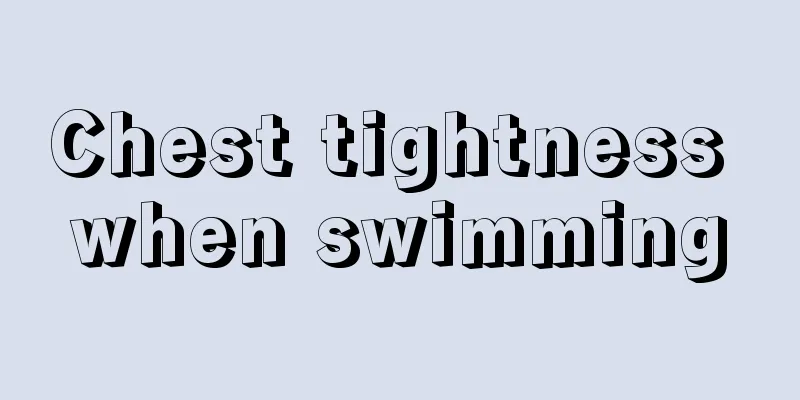Chest tightness when swimming

|
Because swimming uses muscles throughout the body to move forward, it can have a good shaping effect on some muscles in the human body. Therefore, swimming has become an increasingly popular form of sport, especially in the hot summer when soaking in a swimming pool is very cool. However, some people will experience some abnormal physical conditions when swimming, that is, chest tightness. So what causes chest tightness when swimming? 1. What is the reason for palpitations, shortness of breath and chest tightness after swimming? 1. Hypoglycemia The early symptoms of hypoglycemia include palpitations, fatigue, hunger, hand tremors, cold sweats, pale complexion, cold limbs, or nausea and vomiting, which are mainly caused by excessive excitement of the sympathetic nerves and excessive adrenaline. Hypoglycemia is episodic, not frequent, and rarely causes symptoms of chest tightness and shortness of breath. 2. Anemia Anemia can cause symptoms such as dizziness, palpitations, and tachycardia, but generally does not cause symptoms of chest tightness. 3. Low blood pressure It also mainly causes dizziness, but the blood pressure is around 60/90, which generally does not cause changes in blood supply. 2. It is best not to swim during these periods 1. Avoid swimming before or after meals: Swimming on an empty stomach will affect appetite and digestive function, and may also cause unexpected situations such as dizziness and fatigue during swimming; swimming on a full stomach will also affect digestive function, and may also cause stomach cramps, and even vomiting and abdominal pain. 2. Avoid swimming after strenuous exercise: Swimming immediately after strenuous exercise will increase the burden on the heart; the sudden drop in body temperature will weaken resistance and cause colds, pharyngitis, etc. 3. Avoid swimming during menstruation: Swimming during menstruation can cause bacteria to easily enter the uterus, fallopian tubes, etc., causing infection, leading to irregular menstruation, excessive menstrual flow, and prolonged menstruation. 3. Skin's reaction period to cold stimulation Phase 1: After entering the water, the skin's blood vessels contract due to the stimulation of cold, and the skin color becomes pale. Phase 2: After staying in water for a certain period of time, the blood flow on the body surface expands, the skin turns from pale to light red, and the skin turns from cold to warm. The third stage: staying too long, the body temperature dissipates more than the heat generated, and goose bumps and chills appear on the skin. This is a taboo period for summer swimming, and you should get out of the water in time. Swimming should generally not last more than 1.5 to 2 hours. |
<<: What's wrong with my neck twitching
>>: The difference between artificial insemination and test tube
Recommend
What are the methods of home care for liver cancer? Recommended Chinese medicine prescriptions for treating ascites caused by liver cancer
What are the methods of home care for liver cance...
What should I eat if I have memory loss?
Memory is a unique ability of living things. Memo...
Can potatoes help remove dark circles?
The problem of dark circles under the eyes can be...
Where is the best place for snoring massage
Most people have the symptom of snoring. In fact,...
How to relieve vomiting after chemotherapy in osteosarcoma patients
Osteosarcoma patients often experience gastrointe...
What is the reason for frequent dizziness and tinnitus
If symptoms such as dizziness and tinnitus occur ...
How long can a patient with malignant glioma live
How long can a patient with malignant glioma live...
Red streaks appear on my body when I scratch it
The human body is very fragile, especially the sk...
What harm does bile duct cancer do to the human body
Once you are diagnosed with bile duct cancer, the...
Does apples have a ripening effect?
Apple is a commonly eaten fruit. It is rich in an...
Do you know four types of unhealthy sleep?
Everyone needs to sleep every day. It can be said...
TCM Syndrome Differentiation and Treatment of Bladder Cancer
Bladder cancer belongs to the category of urinary...
Gallbladder cancer has spread to the liver for 4 months
Gallbladder cancer has spread to the liver for 4 ...
Why do my hands itch in the middle of the night?
Itchy hands are a common symptom, and this sympto...
Why does my face itch when I sweat?
In the summer, after sweating a lot, you will fee...









